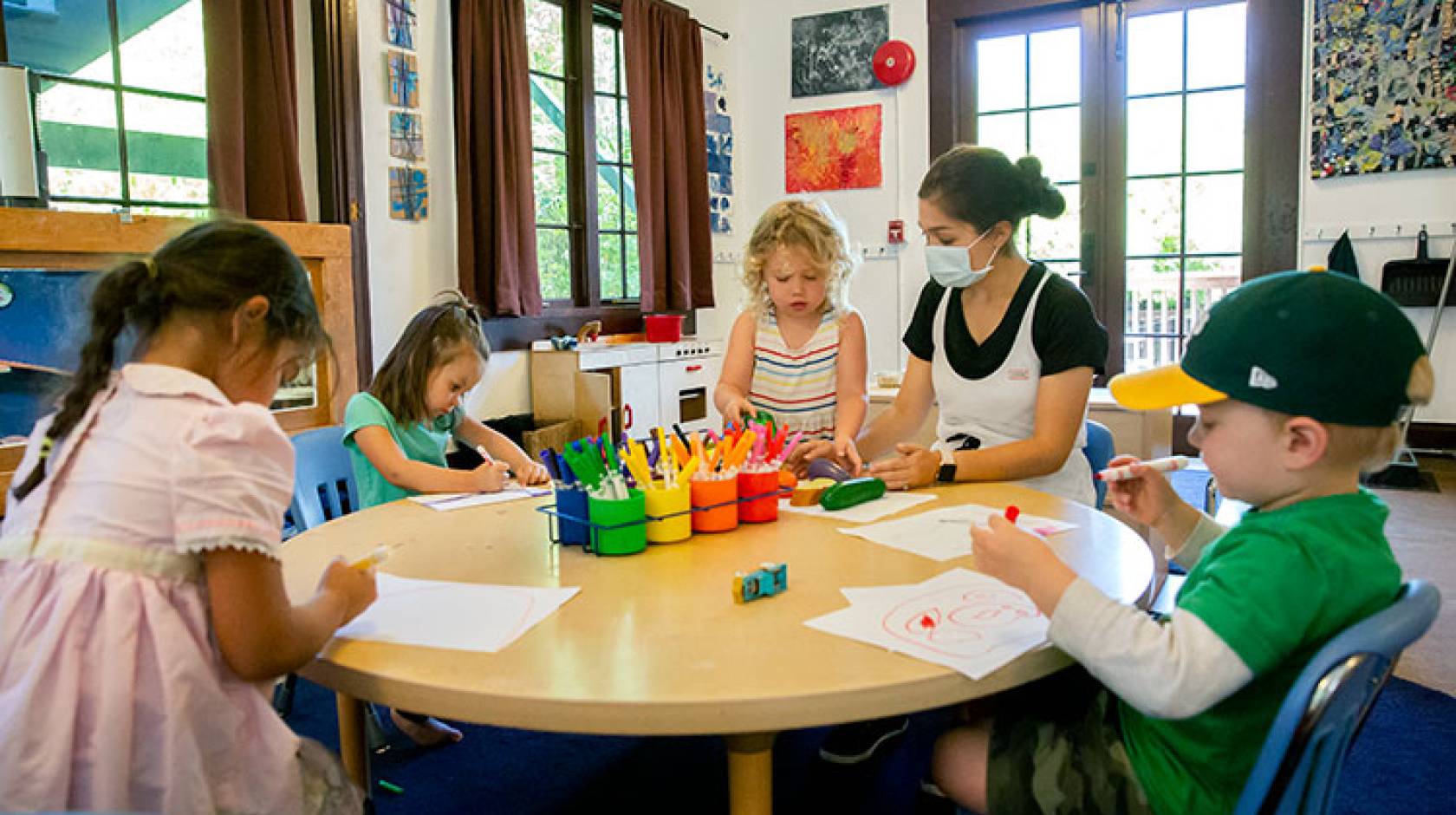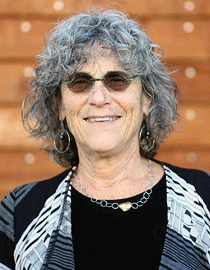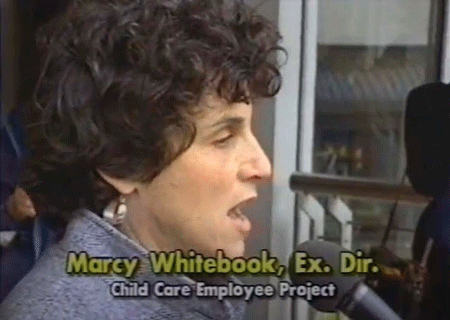Barbara Zheutlin, UC Berkeley

Child care in the United States is at a crossroads, with lawmakers in Washington, D.C., considering historic measures to improve out-of-home care and early education. Last year’s effort to prioritize child care and its workforce through the Build Back Better Act failed, but the launch of a new federal project last month has signaled serious interest in improving pay and other conditions in a field where women do almost all of the work.
A new web-based history project at University of California, Berkeley, shows that the effort to respect and adequately pay the women who care for and teach our youngest children is more than a century old. The Early Childhood History Organizing Ethos and Strategy project — ECHOES for short — initiative of Berkeley’s Center for the Study of Child Care Employment (CSCCE).
To mark Women’s History Month, CSCCE’s Barbara Zheutlin interviewed Marcy Whitebook, founder and director emerita of the center and creator of ECHOES, to explore the little-known history of child care in the U.S. They highlight the women who contributed to its development and address why such a critical component of child development has never been adequately funded. Zheutlin is a writer for CSCCE and ECHOES.
For over 20 years, CSCCE has led the effort to focus on child care workers as essential to child care reform, and its research and data have informed national policy, including the recent Build Back Better Act. The center is a leader of the new national Early Care and Education Workforce Center, which is funded by the U.S. Administration for Children and Families (ACF).
Q: ECHOES demonstrates that child care and education programs initially evolved based on the needs of families. How did “care” and “education” get divided?
A: When kindergartens and nurseries were getting started, parents didn’t have enough money to pay for the care and education of their youngest children. The early advocates saw that they needed public funding, even in those very earliest years, if they were going to be able to pay for care for the youngest children. But the public schools in most states had a narrow definition of education, they only recognized reading, writing, and arithmetic as “education.”
Q: Why was kindergarten such a radical idea when it was started?
A: People didn’t think that little children could learn. So, the idea that you could teach young children was radical. And kindergarten introduced the idea that children learn through playing. Many didn’t understand that through play, children were learning.
Q: What surprised you about the early years of kindergarten?
A: I was amazed to discover that kindergarten was originally intended, and then often offered, to 2-, 3-, and 4-year-olds.
Q: So, why do we think that kindergarten is only for 5-year-olds?

Marcy Whitebook
A: Unfortunately, to get kindergarten established in the public schools, those advocating for kindergarten had to compromise. They had to accept that kindergartens in public schools would primarily be for 5-year-olds, because including younger kids would have meant more kids, which would have cost more money.
So, advocates made a budget-driven compromise, and we are all living today with the consequences. We are still fighting to get early care and education for children under age 5 in this country.
Another surprise was learning that it took 150 years to get kindergartens into the public schools. For those of us trying to get accessible child care, this is truly sobering.
[Learn more: “The Kindergarten Lessons We Never Learned”]
Q: The new ECHOES website highlights the Worthy Wage Campaign of the 1990s — and its beginnings in the 1970s. Why did you want to tell these stories?
A: I was surprised when I heard that many people working with me in the field hadn’t heard of the Worthy Wage Campaign. And they didn’t know anything about the teachers and their activism in the 1970s. When I started telling them about our campaign to increase wages, they couldn’t believe they hadn’t heard of it before. They didn’t realize how active teachers were in trying to improve their jobs and the entire early care and education system. It inspired them.
Q: So, child care teachers were organizing in the 1970s — that’s 50 years ago!

Work done by Marcy Whitebook and other child care and early education activists has had a deep impact, but progress has been slow.
A: Time flies! We were all working with young children in child care or preschools in centers and family child care homes. In a course that I organized in the 1970s, we learned that in the late 19th and early 20th centuries, teachers — women like ourselves — were fighting to include younger children in the public education system. It inspired us to see that women like us could make a difference, stepping outside of the day care group and fighting for a change in public policy.
Q: How did what you started in the 1970s evolve to become the Worthy Wage Campaign in the 1990s?
A: There was a terrible staffing crisis—just as there is today. Not enough teachers. The Worthy Wage Campaign was a national grassroots movement led by teachers and family child care providers that emerged in response to that crisis. We started in just a few communities, but discovered that there were activists throughout the country.
I’m thrilled that in ECHOES we can highlight the stories of courageous teachers, parents and other social justice activists online. And what’s fun about a website, as opposed to a book, is that we can share the songs activists made up and sang to keep our spirits up.
Q: It can be difficult to get public support for early care and education. How much do you think this difficulty is rooted in conventional thinking about the role of women?
A: Mmmm — 100 percent? As I read about the late-19th century development of day nurseries and the growth of kindergarten, I was dumbstruck to learn that the leader of the movement to create day nurseries was an activist against women’s right to vote. That seemed so strange. Why would she not want women to be able to vote?
But the more I thought about it, I realized that some of the women who worked to create child care didn’t really like child care. They saw child care as a necessary evil, as something that had to exist to serve the women who had to work. They had a deep prejudice against women working. And they also were prejudiced against women who had to work.
Of course, at the same time, there were other people who believed that it was fine for women to work, and that child care should become a public good — the way public education is.
Q: Are you optimistic or pessimistic about the future of child care in the United States?
A: Both.
I’m pessimistic because, in the United States, we don’t provide adequate support for families. We still don’t see early care and education as a public good, as a service we as a society should be providing just as we provide public K-12 education. That means it may take decades to create and fund care and education for all children across the country.
And yet, I’ve seen changes that make me optimistic. When we first talked about paying early educators more in the 1970s up until just a couple of years ago, even advocates for child care told us to shut up. They didn’t want us to advocate for increasing the pay for providers and educators, because that would mean the cost of child care would go up. And child care was already too expensive.
Today, across the country, many people are talking about the importance of raising the pay for educators. That’s an enormous change — and it inspires optimism.

As early as the 1970s, Marcy Whitebook (far left) and other activists were pressing for better wages for child care and early education teachers. Growing public support today is rooted in that work a half-century ago, she says.

